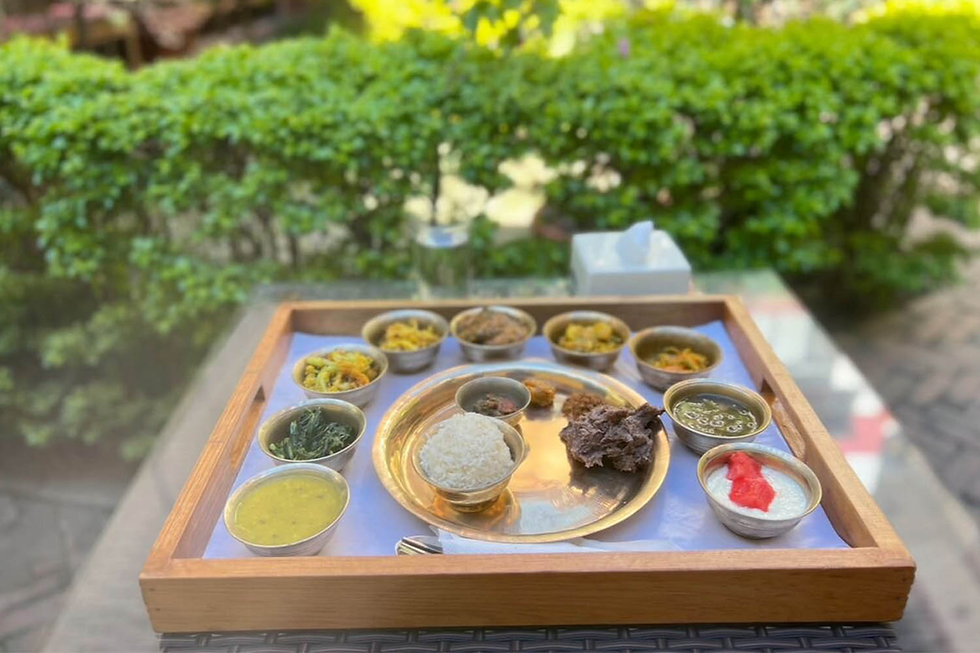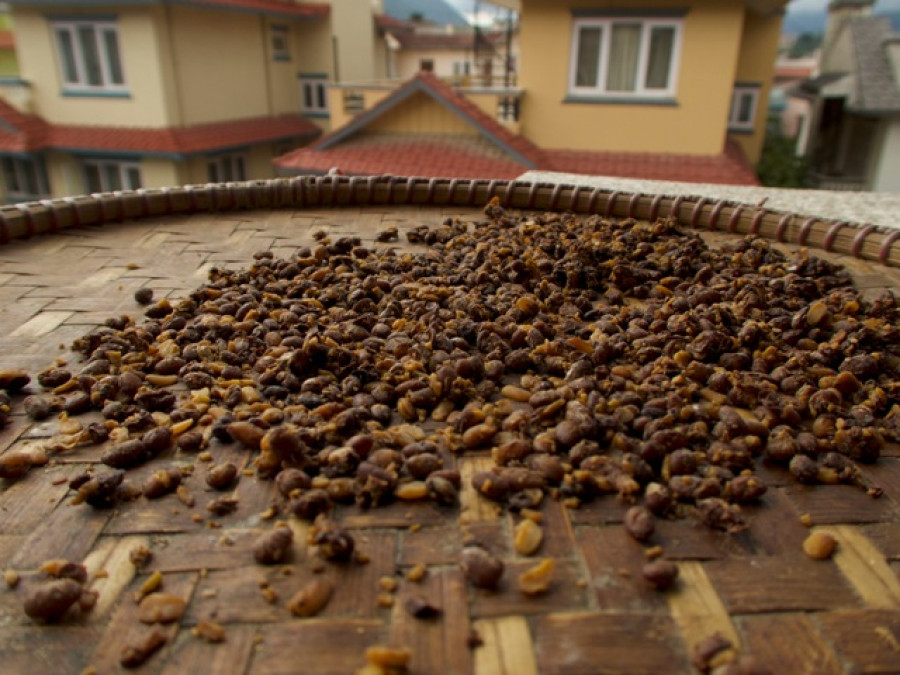Nepali Cuisine: The Ancient Wisdom Behind a Healthy Diet
- hellochefnepal
- Aug 6
- 3 min read

Nepali cuisine is not merely a collection of dishes but a centuries-old framework of nutrition woven into the country’s geography, cultures, and agricultural diversity. Across the high Himalayas, mid-hills, Terai plains, and ethnically varied communities, Nepali food reflects a deep indigenous understanding of balanced nourishment rooted in local ingredients, preservation practices, and communal values. The remarkable biodiversity of Nepal supports an extraordinary variety of edible plants and grains used in daily meals and medicinal preparations. From millet, buckwheat, and barley to rice, maize, legumes, leafy greens, wild herbs, honey, and oilseeds, this multi-ecosystem diet has long fostered nutritional resilience. Millets and buckwheat bring iron, zinc, and antioxidants, while barley and wild greens offer rich sources of fiber and micronutrients, creating a foundation of both sustenance and health.
Traditional Nepali food practices show how deeply our ancestors understood nutrition. Soaking and sprouting legumes before cooking, as in the nine-bean soup Kwati, enhances nutrient absorption and digestibility. Fermentation, as seen in Gundruk, Sinki, Kinema, and Masyaura, not only preserves micronutrients but also enriches gut health with probiotics and antioxidants. These methods, developed long before modern nutrition science, ensured that meals were as healing as they were filling. The balance in every plate is another striking feature of Nepali cuisine. Wholegrains and millet porridges such as Dhindo, paired with lentils, legumes, and often yogurt or fermented sides, form a complete architecture of carbohydrates, plant proteins, healthy fats, fiber, and micronutrients. Nothing is excessive, nothing is lacking—every element contributes to balance.

The use of spices is not for flavor alone. Turmeric, garlic, ginger, cumin, fenugreek, and coriander, all staples in Nepali cooking, have long been recognized for their digestive, anti-inflammatory, antimicrobial, and antioxidant benefits. These ingredients, woven seamlessly into everyday meals, ensure that food nourishes both body and immunity. Fermented foods, from Gundruk to home-made pickles, are another essential dimension of the Nepali diet. They enhance digestion, strengthen the immune system, and provide nutrients that are otherwise scarce in challenging terrains, making them invaluable to communities across Nepal’s varied landscapes.
Seasonal wisdom plays a key role in Nepali food culture. Meals are designed around what is fresh and available, with vegetables, grains, tubers, and fermented items prepared in line with natural cycles. This not only guarantees maximum nutrient availability but also minimizes waste, reflecting sustainable living practices. Many Nepali families continue to grow and preserve much of their own food, maintaining food sovereignty while ensuring that what reaches the table is fresh, local, and nourishing. In remote regions and across diverse ethnic communities, cuisine has adapted to geography and environment. From the barley-rich diets of Himalayan Sherpas to the rice and fish of the Tharu in the Terai, Nepali food traditions demonstrate resilience and creativity. Even marginal crops such as wild tubers and underutilized plants have served as vital sources of nutrition in food-insecure regions.

Today, when processed food and refined grains dominate modern diets, the lessons from traditional Nepali eating patterns hold renewed importance. Reviving the practices of eating whole grains, legumes, fermented foods, wild greens, and healing spices can help counter the rising challenges of malnutrition, diabetes, obesity, and cardiovascular risk. Research highlights that the traditional Nepali diet, especially rich in millet, legumes, and wild leafy vegetables, lowers glycemic load, supports heart health, and enhances dietary diversity.
Nepali cuisine, therefore, is more than nostalgia — it is a living blueprint for well-being. It carries within it an indigenous nutritional intelligence shaped by geography, biodiversity, social traditions, and sustainable food systems. Every flavor, from earthy porridges to tangy fermented greens, carries centuries of knowledge about balance, immunity, and resilience. As we seek healthier lifestyles, perhaps the answers lie not in imported diets but in the wisdom already on our plates. Rediscovering and revitalizing these food traditions is not only about preserving heritage but also about building healthier bodies, stronger communities, and sustainable ecosystems for the future.












Comments